Project Maximus Part 4
Since the 2008 BMW M3 of Project Maximus fame will be getting a 211 boost in horsepower it follows that a boost in stopping power is needed. We chose AP Racing's brand new Radi-CAL™ big brake system designed by STILLEN to clamp down the speed generated by the ESS Supercharger under the hood and the Ohlins Road and Track coil-over suspension at the four corners.
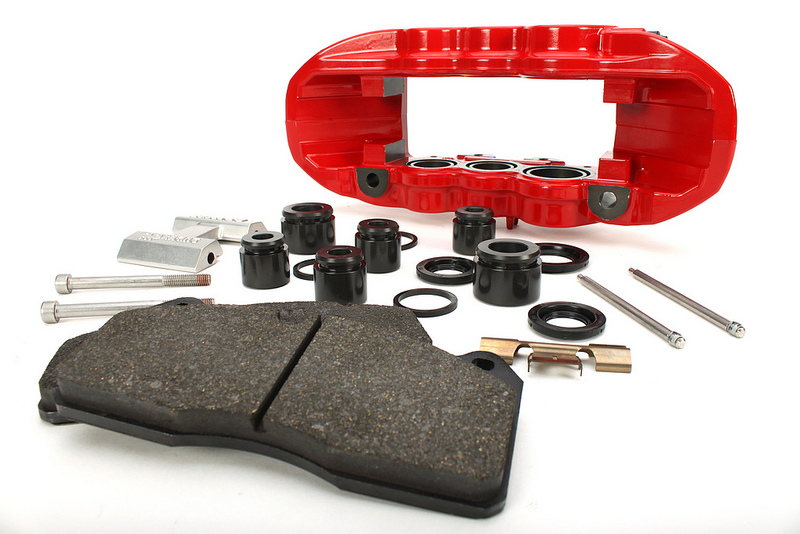
Not as widely known as Brembo, or even StopTech, AP Racing is a leading manufacturer of performance braking and clutch systems, for road and especially race use. We were able to check out their new range of Radi-CAL™ forged brake calipers--which incorporate quite a bit of race technology-- last fall at SEMA.
The forging process they use results in a strong, stiff two-piece caliper that is 20% lighter than similar cast calipers. This not only lowers a vehicle’s un-sprung weight compared to standard big brake kits, but also ensures continued high performance in demanding applications. The engineers at the show claimed the caliper design had been tested with over 500,000 cycles of pressure and torque. The non-symmetric design is the result of finite element analysis testing that determined where weight saving could be achieved without compromising strength and stiffness.
Radi-CAL calipers are double sealed for durability. Hard anodized aluminum pistons are differentially sized to maximize pad life. And a removable forged bridge allows for easy pad changes. Anti-rattle springs prevent pad movement and knock back.
The kit included floating two-piece disc assemblies (we chose the "j-hook" slotted design rotor over the weaker, in our opinion, cross-drilled style), and custom fitted aluminum mounting brackets, standard bolts and steel braided brake lines.
In preparation-- and to make the installation of the Ohlins suspension that much easier-- we already had the OEM brake system off the car-- lines, calipers, brackets, rotors and dust shield.
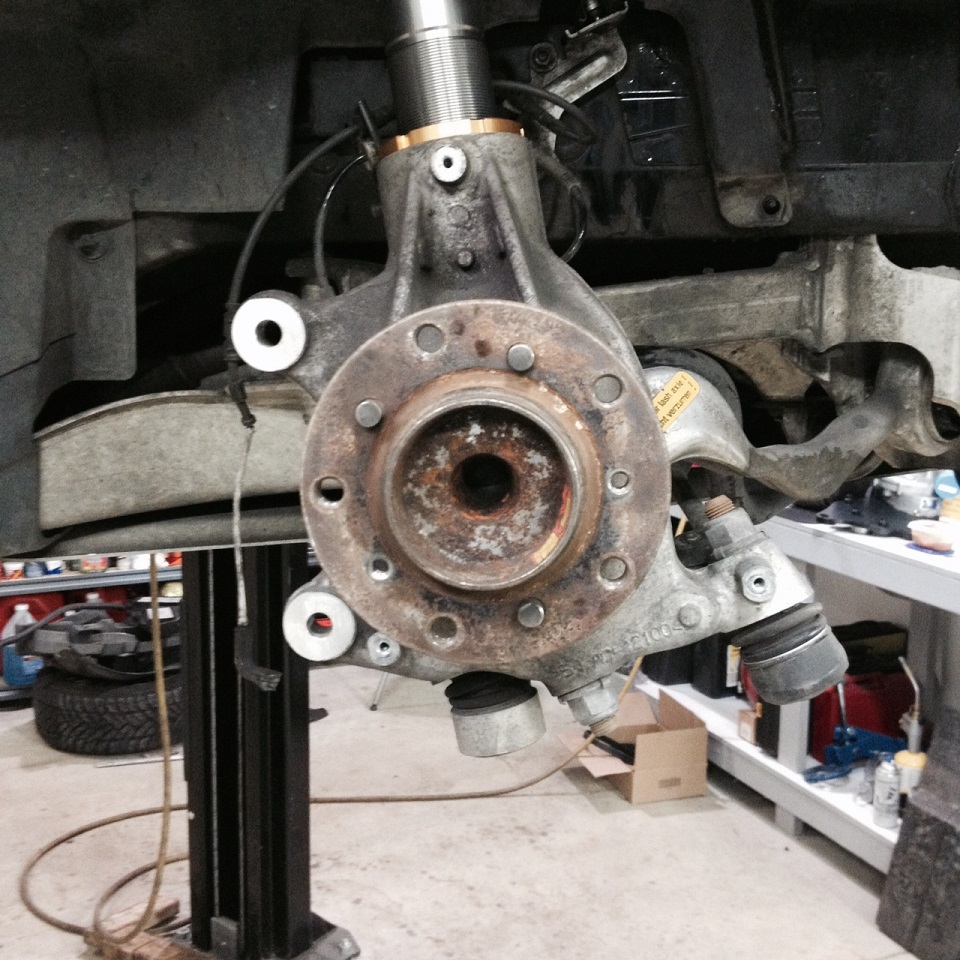
After cleaning up the wheel bearing and suspension mounting points we did a quick test fit. Because the AP Racing brakes are larger than stock in every way, it was clear we'd have to trim the OEM dust shield. We did debate leaving the front dust shield off altogether. But because the M3 will still be driven regularly on public roads, keeping grit and pebbles from lodging themselves behind the rotor is a good thing. Also, the shield acts as a heat barrier between the rotor and the suspension, specifically the rubber end link bushings and the fluid in the nice new Ohlins dampers. So we trimmed to fit.
Here you can see the customized front shield installed with the aluminum caliper bracket supplied with the kit.
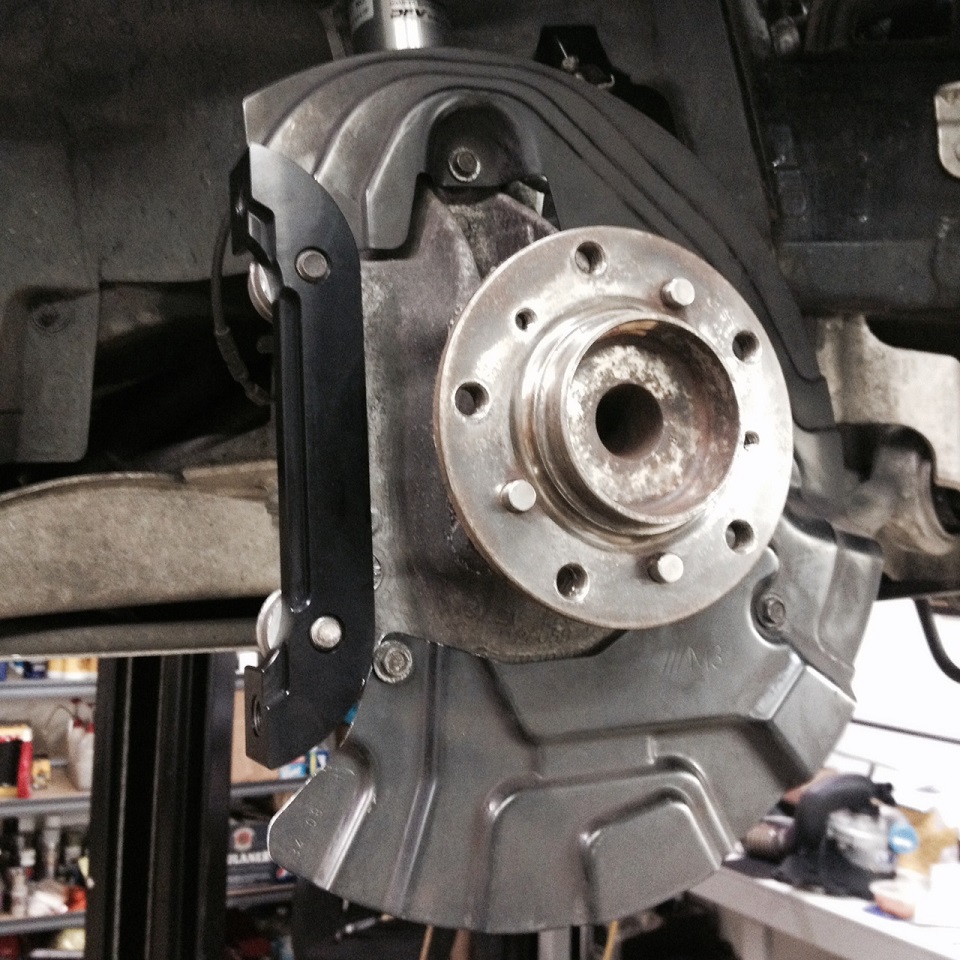
The rear shields required more trimming because in stock configuration the shield wraps around the perimeter of the smaller OEM rotor. And to make things just a bit more difficult, the shield is captured behind the bearing, so the trimming had to be done while on the car.
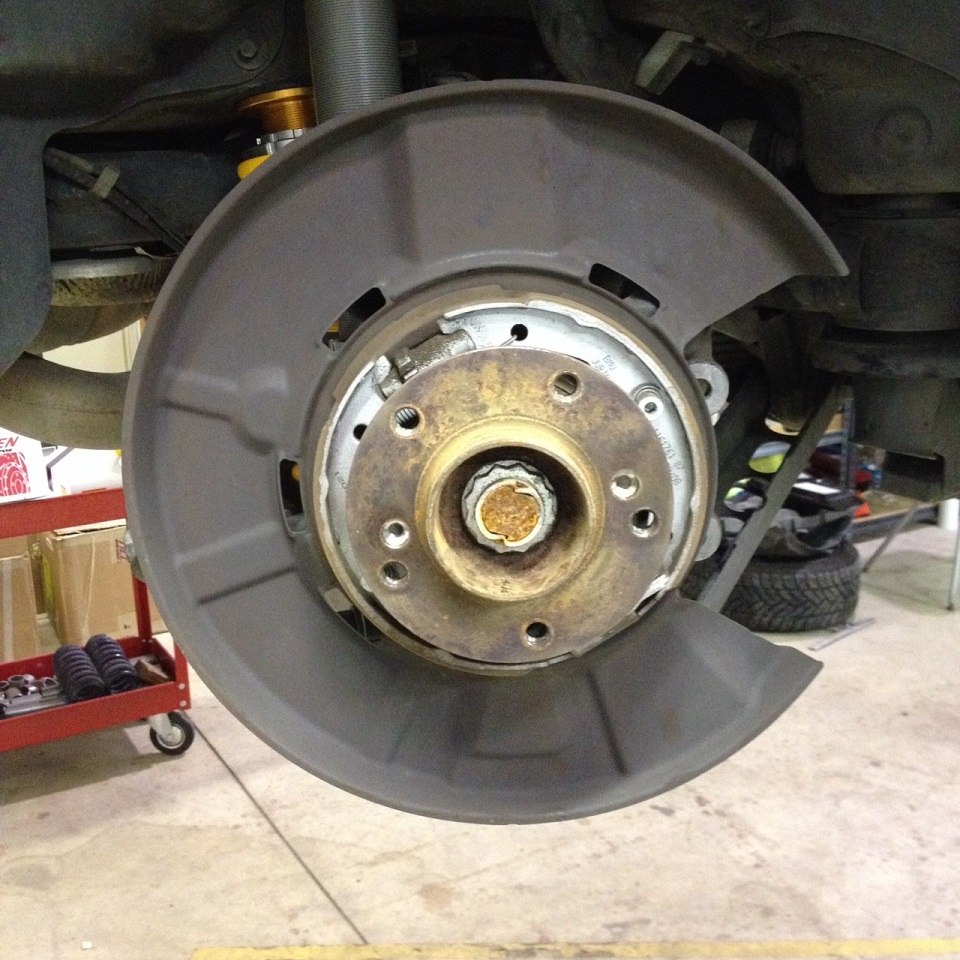
After the rear shields were trimmed, cleaned and exposed metal edges painted.
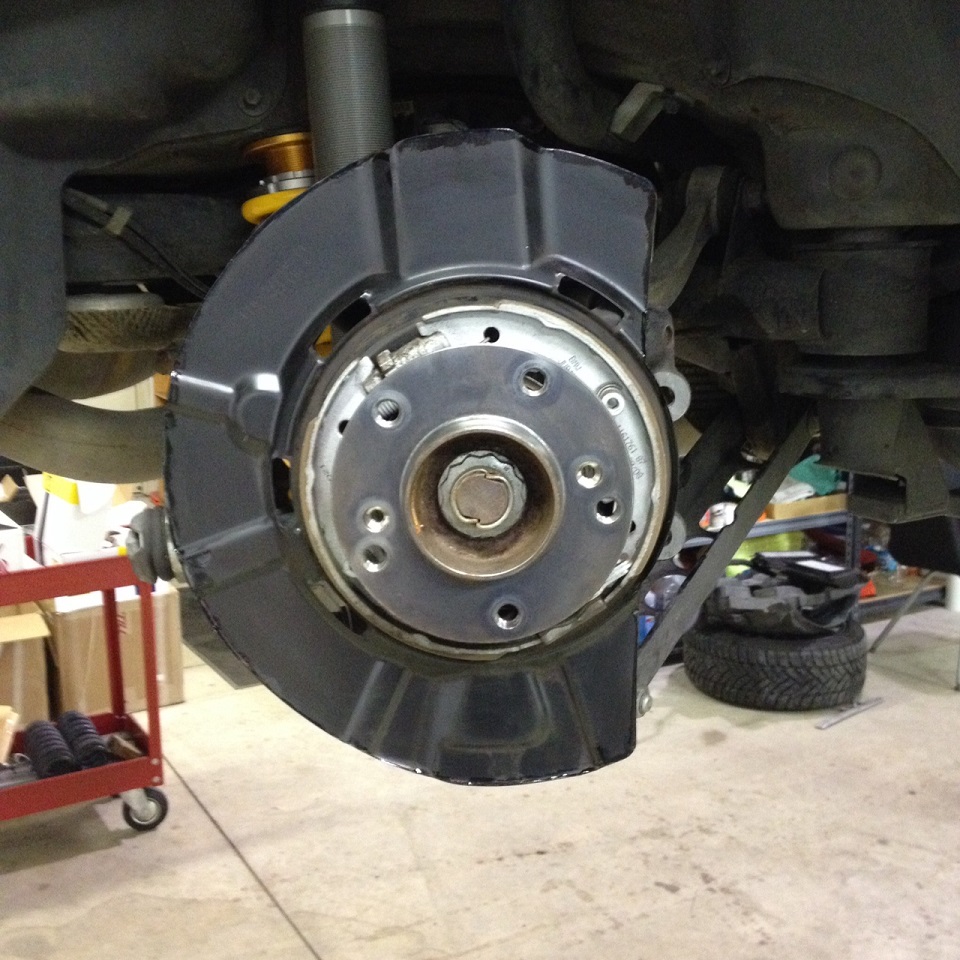
One of the small details we really liked was the steel bushings threaded into the aluminum brackets. This makes tightening the caliper bolts to torque more reliable without the possibility of stripping the threads. Google "stripped Brembo calipers on Subaru STi" and you'll understand what we mean.
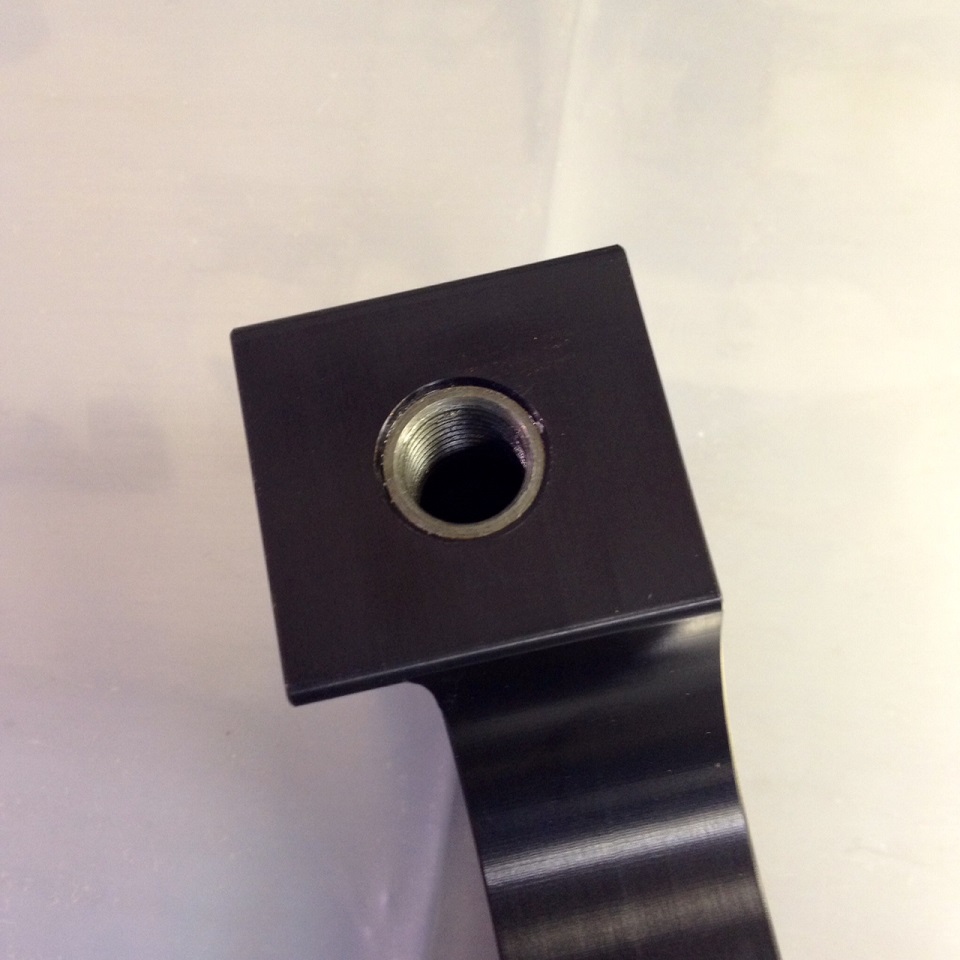
Hooking up braided brake lines is always a messy job-- they are stiffer than normal rubber lines and as soon as a drop of brake fluid hits your tools it becomes a slippery mess. Here again it is absolutely crucial that everything is clean before you start. Grit in the line or at the connection is not a good thing. We use plenty of brake clean and a small steel brush to make sure the stock hard line nipple that's on the car is clean before we thread it into the supplied brake line.
In the case of the front lines on the M3 we had to use a washer to keep the new line properly attached to the body tab.
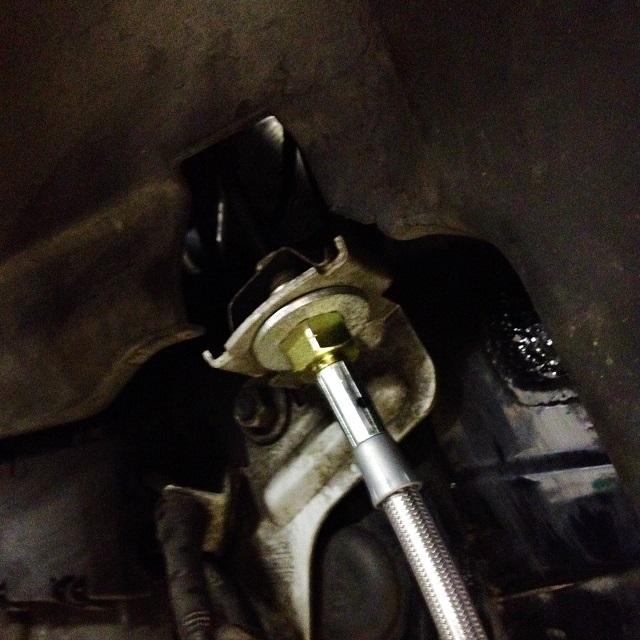
Here are a few pictures of the front brakes installed-- I think you'll agree they do look good.

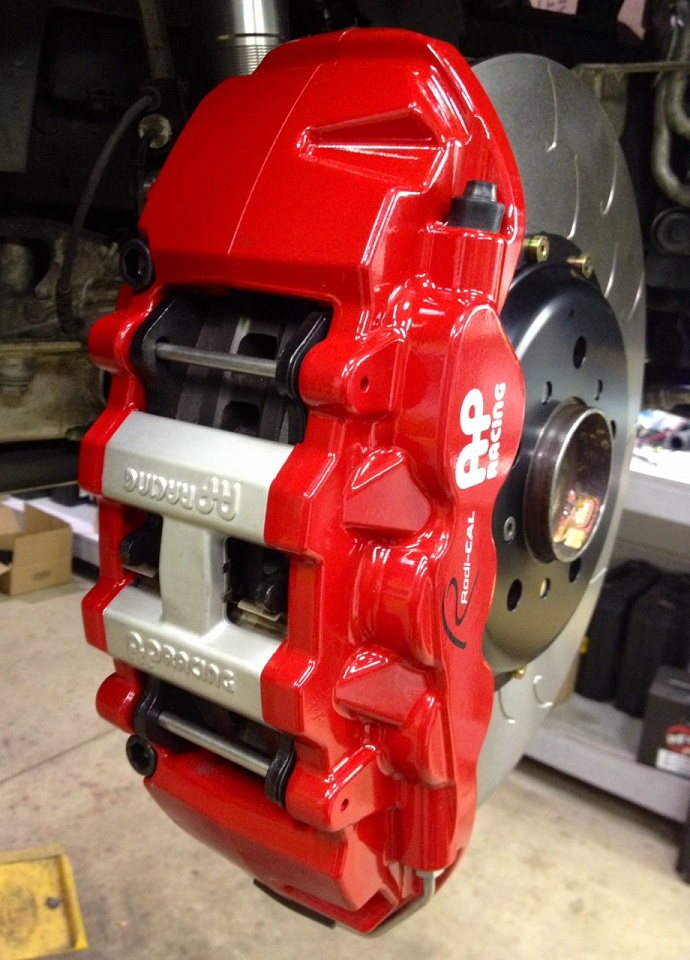
******
Switching to larger brakes obviously brings with it added weight, but how much exactly? Here are some statistics for this project.

Radi-CAL front rotor: 27.90 lbs versus Stock M3 front rotor at 21.2 lbs
Radi-CAL front caliper: 13.80 lbs versus Stock M3 front caliper at 12.7 lbs
Radi-CAL rear rotor: 20.35 lbs versus Stock M3 rear rotor at 19.3 lbs
Radi-CAL rear caliper: 9.85 lbs versus Stock M3 caliper at 10.0 lbs
*Pads included in all caliper weights.
*Stock calipers had lines attached and some residual fluid in pistons, and rotors showed some wear which is why we rounded to the nearest tenth of a pound.
As you can see, most of the weight is in the giant 370 mm rotors, but the larger calipers also add a little (except in the rear where the Radi-CAL caliper is slightly lighter).